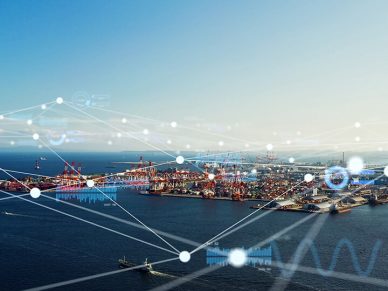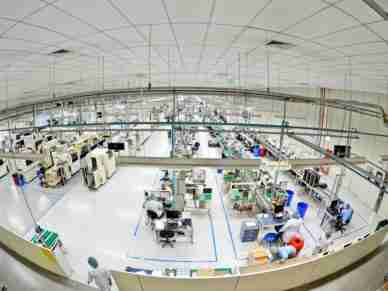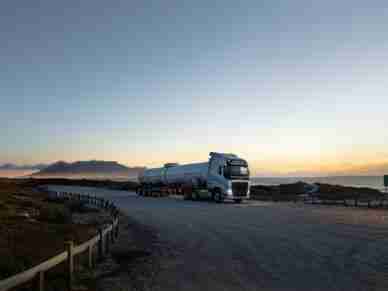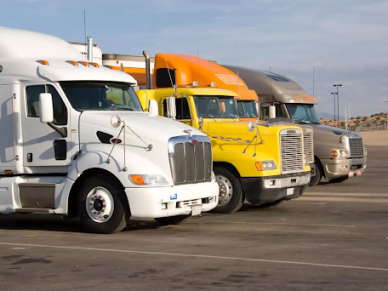Why manufacturers and logistics companies are nearshoring in Mexico

Draw a line north from Laredo, Texas, and you might as well be drawing a huge 50-yard line across the U.S. Throw in the fact that it’s less than 3 hours from Monterrey, Mexico’s manufacturing capital, and you’ll get a sense of why Laredo and its cross-border counterpart, Nuevo Laredo, are poised to become a logistics hub for North America.
Nearshoring, an idea that was gaining traction before Covid and has exploded since, is the trend of companies moving manufacturing out of China and other Asian countries and into Mexico, where shortened supply chains can ship products all over the U.S. in a matter of a couple of days rather than a few weeks.
As the Wall Street Journal reported, 5.5 million trucks headed northbound from Laredo in 2022, with the crossing surpassing the volume of goods received by the ports of Los Angeles and Long Beach by October. Expanded bridge infrastructure for trucks and trains is in the works in Laredo, where nearly 4 million square feet of warehouse space is under construction, the WSJ reported.
The Move to Mexico

Based in the Tampa Bay area, BlueGrace Logistics is one of the largest 3PL providers in the U.S. and is embracing nearshoring with an expansion into Mexico. Chief commercial officer and president of 3PL services Scott Schara told BOSS the company plans to have 25-50 employees in Mexico by the end of 2024.
“We’re still selecting the cities we want to go to,” he said. “Initially, we’ll target three cities for sales and operational aspects, primarily sales.
“Having a presence and having Mexican employees will help with service. We could manage it from Tampa or Chicago or one of our offices, but we feel having the presence down there and developing the culture will really be there to service our customers.”
Mexican culture emphasizes face-to-face interaction more than conducting business over the phone and email, Schara said. As comes with any expansion into new territory, you don’t know what you don’t know, so local expertise will enable efficient growth without too many growing pains.
The move is one BlueGrace had been considering for years before the supply chain disruptions spurred by Covid made clear that nearshoring was the right move.
“We’re a service provider, and our customers were kind of driving us towards a solution, saying, ‘Hey, we’re going to take manufacturing out of Asia and put it into Mexico. How will you and can you support us?” Schara said.
While some facilities in Mexico do transport goods by barge to Galveston, the vast majority move from Mexico by truck or train, and nearshoring will provide relief to those ports of the West Coast that had weekslong logjams during the height of Covid-related shutdowns.
The increased volume in Laredo has led to long lines of trucks, which is why the city is expanding the World Trade Bridge to 16 lanes from eight, and rail line Canadian-Pacific-Kansas City is doubling the capacity of a rail bridge across the Rio Grande, the WSJ reported.
Nearshoring Incentives

Tariffs on Chinese goods, the war in Ukraine, and of course, Covid all played roles in driving supply chains from global to regional. What makes nearshoring to Mexico so attractive is the duty-free provisions of the United States-Mexico-Canada Agreement and the fact that businesses don’t need to keep as much inventory on hand when they can replenish in two days rather than waiting anywhere from two to six weeks for shipments across the Pacific.
Hundreds of companies, including Chinese ones, are moving manufacturing bases from China to Mexico. That puts Laredo in a unique position along supply chains.
“The total trade between Mexico and the U.S., 40% of that crosses through the port of Laredo,” Daniel Covarrubias, director of the Texas Center for Economic and Enterprise Development, told the WSJ. “If you see on a map where Laredo is situated between the United States, the biggest market in the world, and Mexico, one of the biggest producing markets in the world, well it’s right in the middle.”
Over 15,000 trucks and $800 million worth of goods crossed the border at Laredo last year, and those figures will only grow with nearshoring. Mattel has moved its headquarters to Monterrey, where Lego operates its largest factory, and Tesla announced plans for a gigafactory.
Any customers that were on the fence about nearshoring are off it now, Schara said. In addition to the duty and inventory considerations, shorter supply chains without emissions from trans-Pacific boats, nearshoring companies will more easily meet climate and ESG goals.
“This is a really significant opportunity, not only for BlueGrace, but for the entire country,” Schara said. “… We saw this snowball effect happen from Covid, but it’s a viable solution.
“In the border towns and states, there are going to be a lot of jobs created through this, and we’re happy to support and be part of that growth, and we really look forward to the opportunity.”
Laredo, other border areas, and a lot of companies turning to nearshoring do as well.














Leave a Reply